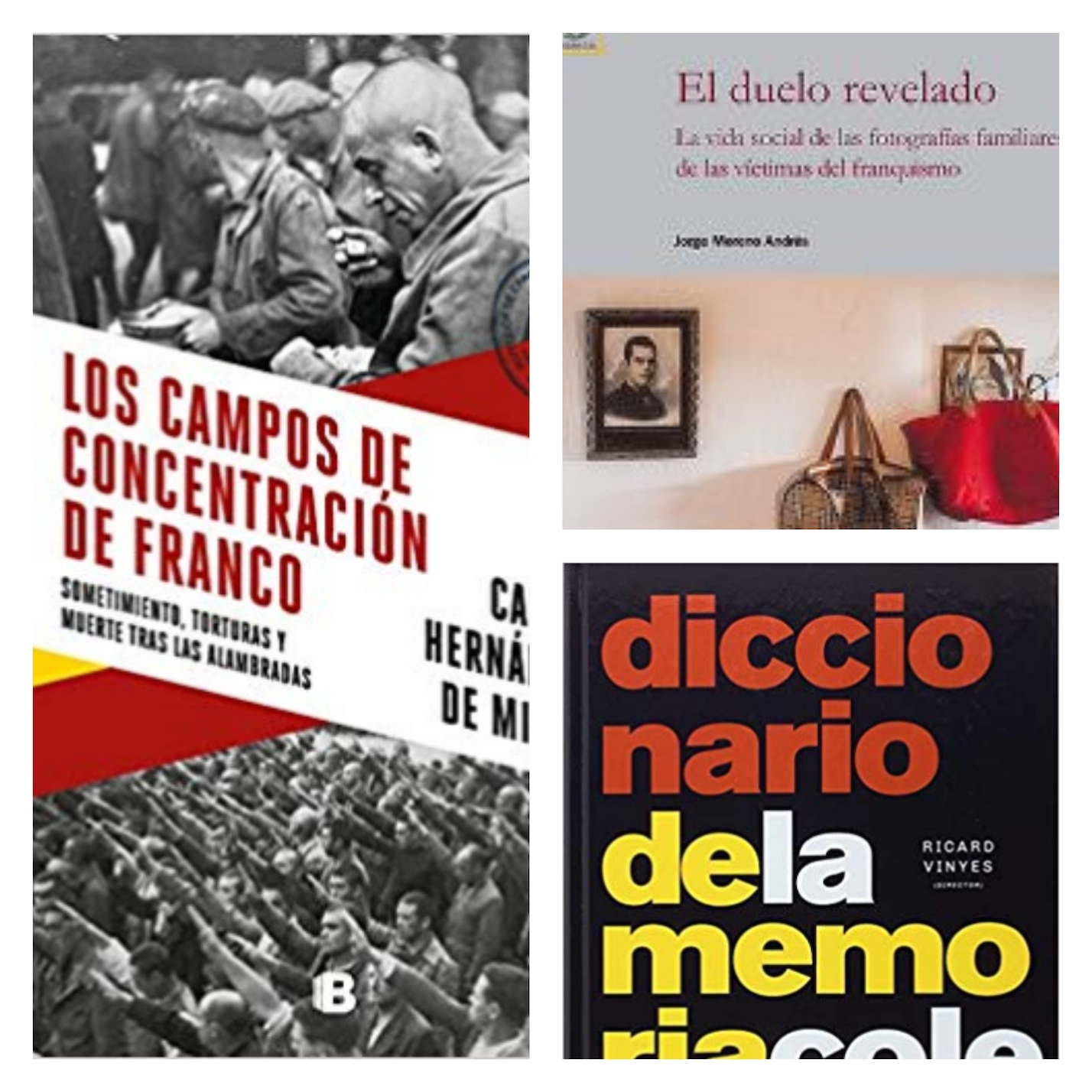Having been active for over two years, Innovation and Human Rights wishes to mark World Book Day, as we did last year, by offering our recommendations of a selection of books relating to the Spanish Civil War and Francoism. For last year’s selection follow this link.
These will appear in three sections, each dealing with a different theme. We begin today with (1) New books. This will be followed by (2) Memoirs of the war and the postwar years by women and (3) Forced labour during the Franco period.
New Books
- Los campos de concentración de Franco– The author, journalist Carlos Hernández defines his research as a “collective work” but he deserves the praise for giving it a new perspective, by synthesising and then presenting in such a striking form the reality of the world of the Francoist concentration camps, particularly in the post-war period. This is achieved through a chronological narrative with horrifying testimonies by survivors across all parts of Spain. It is impossible to continue ignoring the tragic and hitherto silenced reality of cruelty, torture and murder experienced by the defeated. In 2005 Javier Rodrigo listed 188 camps in his pioneering work of historiographical research Cautivos: campos de concentración en la España franquista, 1936-1947 . Hernández has increased the number by listing almost 300 and has provided an accompanying website with links to interesting videos of testimonies and an interactive map on which the user may, for example, locate the first concentration camp opened by the rebels on 19 July 1936: la Alcazaba de Zelouan in what was then Spanish Morocco (today Kasbah de Selouane, twelve kilomtres south of Nador, en Morocco). The names of over a thousand of the prisoners in this concentration camp taken from documentation in the Archivo General Militar de Guadalajara, are included in our database.
- Diccionario de Memoria Colectiva – This is a collective work, compiled by the historian Ricard Vinyes, which contains 269 entries written by 187 authors. This is a book which the reader will want to approach at their own pace and which invites readers to reflect on concepts. Under the entry, for example, of Víctima we find: “Some people prefer to avoid a concept which has not managed to avoid stigmatization, which reduces subjects to pain and suffering (…) Others defend the use of this term as a form of resistance and support its use as an engine of political action and of recognition of groups of people who have lived in oppressive situations. Under Subtierro: “funeral space of those people defeated in the Spanish Civil War (1936-1939), especially those civilians executed in operations carried out behind the lines and thrown into mass graves (…) these mass graves sent an exemplary signal warning of the potential destiny of dissidents and prevented mourning by family members or political supporters”.
- El duelo revelado: la vida social de las fotografías familiares de las víctimas del franquismo – Jorge Moreno Andrés, a film-maker with a doctorate in anthropology, examines the universe of family pain through photographs of victims of forced disappearance during the Civil War and under the Franco Regime and (re)constructs their histories. Who keeps photographs of the victims of repression? Where? How? What value do these photos have and how is this transmitted? The value of this work lies in explaining from a new perspective the reality of the silence imposed on the families of the defeated. For a summary by the author himself follow this link
